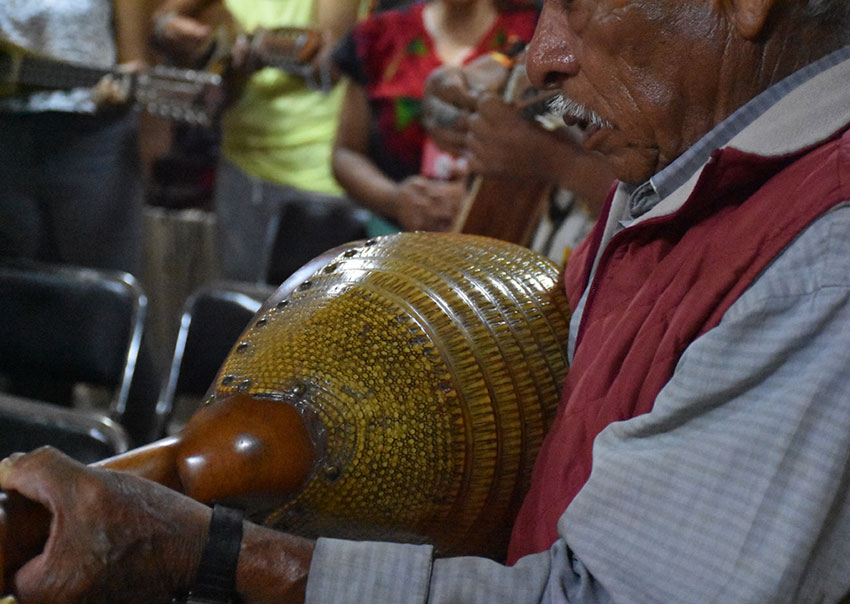The cool night air fills with the smoke and smell of burning copal while the songs of concheros — traditional musicians — announce the beginning of the velación, or vigil, a ritual that takes place the night before important fiestas in San Gregorio Atlapulco, Mexico City.
As with many religious ceremonies in Mexico, a velación isn’t strictly a Catholic celebration but is something referred to as religión populár — popular religion, a mixing of Catholic rituals and symbols with those of indigenous religions. And, of course, like all ceremonies in Mexico, there’s food.
Velaciones are hosted by mayordomos, lay religious leaders who typically devote a year to serving the Catholic church in a variety of ways, and they’re only held in Mexico’s central states: Querétaro, Guanajuato, México state, Morelos, Tlaxcala, Puebla and Mexico City.
According to Javier Márquez Juárez, who has studied the history of velaciones, these are states that had been occupied in pre-Hispanic times by Chichimecas and Mexicas.
“It was during the colonial era that the Chicimecas from Guanajuato and Querétaro formed a brotherhood; this was at the end of the 16th century and the beginning of the 17th,” said Márquez. “Before they were called concheros they were called the Brotherhood of the Holy and Legal Account. And this gave rise to concheros and velaciones.”

In most places, velaciones tend to be small and semi-secret. “Only in San Gregorio Atlapulco are they large and attended by many people,” said Márquez.
This, I’ve come to learn, is typical of most ceremonies in San Gregorio: people turn out in large numbers for them.
Velaciones are usually held in a mayordomo’s house, although at times they’re held in more public spaces; basically, they just need to be somewhere big enough to accommodate a crowd. Tables set up at the front are packed with nichos — wooden boxes in which small figures of the crucified Christ or saints have been placed.
Flowers often adorn the tables. As people wait for the start of the ceremony, they sip atole, a traditional Mexican drink made with corn, served by the mayordomo’s family.
The Concheros enter singing and playing conchas, stringed instruments whose name derives from the fact that their backs are often covered with an armadillo’s shell. “In ancient times, the armadillo was a sacred animal,” said Márquez. “Each armadillo litter has four young and four is the number of the creator gods and the cardinal directions of the universe.”
The concheros are met at the entrance by someone carrying an incense burner filled with copal. A cleansing ceremony is performed and, after it’s completed, the concheros take their seats at the front of the room. An incense burner is placed in front of the nichos and the music begins.

According to Márquez, the concheros first play an instrumental piece that welcomes deceased members of the group and asks permission from them to hold the velación. Once that is done, alabanzas (songs of praise) are sung and the music continues long into the night with a conchero periodically blowing on a conch.
As the night progresses, the mayordomo’s family wend their way through the crowd serving more atole and tea as well food, usually tortas or chilaquiles. No one ever goes hungry at a Mexican ceremony. Off to one side, other family and friends bend over tables, busily making hundreds of bean tamales that will be served during the next day’s fiesta.
Attending a velación gives you the feeling of being transported to a different time and place; the songs, copal and sounds from the conch have an almost hypnotic effect.
“I like velaciones because they invite self-reflection and meditation,” said Márquez. “They lead you to think how complex were pre-Hispanic rituals. From my point of view, the rite of the concheros and the velación would appear to be a different religion within Catholicism. It’s like pre-Hispanic naturalistic thinking enveloped Christian beliefs and together they forged something different.”
Joseph Sorrentino writes from San Gregorio Atlapulco, a town in the Mexico City borough of Xochimilco.
